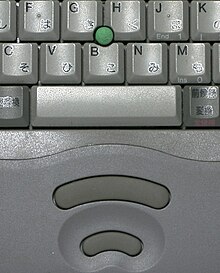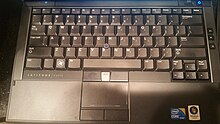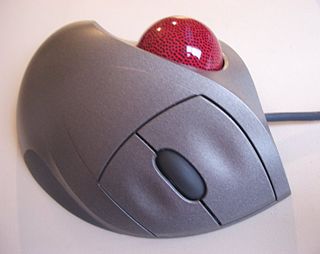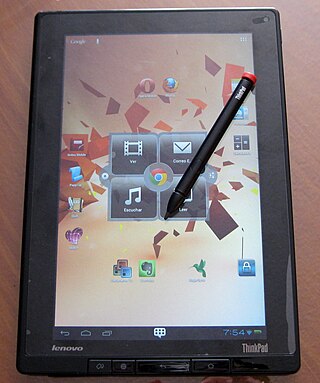


A pointing stick (or trackpoint, also referred to generically as a nub or nipple) is a small analog stick used as a pointing device typically mounted centrally in a computer keyboard. Like other pointing devices such as mice, touchpads or trackballs, operating system software translates manipulation of the device into movements of the pointer on the computer screen. Unlike other pointing devices, it reacts to sustained force or strain rather than to gross movement, so it is called an "isometric" [1] pointing device. IBM introduced it commercially in 1992 on its laptops under the name "TrackPoint", and patented an improved version of it in 1997 (but the patent expired in 2017). [2] It has been used for business laptops, such as Acer's TravelMate, Dell's Latitude, HP's EliteBook and Lenovo's ThinkPad.
Contents
- Variants
- Design challenges
- History
- Problem scope
- Space constraints
- Finger motion reduction
- Continuous motion
- Ergonomics
- Naming and brands
- Informal names
- Other uses
- See also
- References
- External links
The pointing stick senses applied force by using two pairs of resistive strain gauges. A pointing stick can be used by pushing with the fingers in the general direction the user wants the pointer to move. The velocity of the pointer depends on the applied force so increasing pressure causes faster movement. The relation between pressure and pointer speed can be adjusted, just as mouse speed is adjusted.
On a QWERTY keyboard, the stick is typically embedded between the G, H and B keys, and the mouse buttons are placed just below the space bar. The mouse buttons can be operated right-handed or left-handed due to their placement below the keyboard along the centerline. This pointing device has also appeared next to screens on compact-sized laptops such as the Toshiba Libretto and Sony VAIO UX.


















